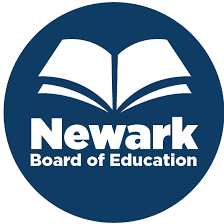As a suburban Jersey girl growing up in the 1970s and early 80s, I knew two things about Newark. It was a city with a fine medical university where I had extensive dental work done, and it had a reputation for terrible schools run, at times, by corrupt leadership. Little did I know then that the city where I literally got my smile would one day have education results worth smiling about.
When Bellwether profiled Newark in 2018 for our Eight Cities project, it was because of the city’s approach to school reform and the remarkable gains in student achievement that came as a result. That story ended with a homegrown Superintendent — Roger León — taking the reins of the district as the state promised their return to local control. As of last week, the process of fully returning Newark schools to control of a locally-elected school board is complete. Now that Newarkers have full control over their schools, they have a new challenge: sustaining and building on the success of recent reforms.
Late last week, MarGrady Research confirmed Newark students continue to outperform peers attending similar schools within the state. Researchers define “beat-the-odds” schools as those that produce better state testing results than other schools in New Jersey with similar racial and socioeconomic characteristics. Compared to demographically similar students in urban schools in New Jersey, Newark students beat-the-odds, or exceed expectation, on their exam achievement outcomes.
Echoing similar results three years ago, Newark continues to lead other cities in the percentage of students enrolled in “beat-the-odds” schools. And it’s not even close: Thirty-five percent of Newark students attend beat-the-odds schools; Boston students are second at 20%. Furthermore, nearly 40% of Newark’s African-American students attend beat-the-odds schools – more than double the rate of Boston, where only 19% of African-American students have that opportunity.
One factor which cannot be understated in driving this success is Newark’s implementation of a universal enrollment system. This system allows parents to choose from a diverse set of high-quality public schools, both traditional and charter. Both sectors provide schools where Newark students can succeed: the MarGrady study found 16% of students in traditional district schools were enrolled in beat-the-odds schools. This is about twice the average rate of all 50 cities studied.
While system reform accelerated in the 2010s under Cory Booker’s mayoral administration, the Newark education story has remained controversial even as student achievement continues to rise. There was the high-profile, but oft-criticized, $100M donation from Mark Zuckerberg, the appointment of two “outsiders” as superintendent (first Cami Anderson and then Chris Cerf), and a hotly contested new teachers contract implemented by Anderson which prioritized teacher effectiveness over tenure and degrees. That contract has been revised under Superintendent León.
During that time, a mix of city leaders, parents, and educators pushed for a return to local control. That mission has been successful. At the same time, resistance grew against the proliferation of charter schools. Although charter growth has been kept in check under the León administration, the Newark charter sector enrolls nearly one-third of public school students. And the evidence suggests that the charter sector in Newark is playing a key role in providing students with excellent opportunities. In Newark, MarGrady found that 75% of charter students are attending beat-the-odds schools: three out of every four students attending a charter school in Newark attend schools which exceed expectations, with school leadership pushing for even better outcomes in the years to come.
Like all districts navigating reopening amid Coronavirus concerns, Newark will face challenges in the year ahead. At some point, perhaps when the school day becomes similar to pre-COVID routines, Newark’s public schools will probably revisit old debates about the role of charter schools in the Brick City. But one thing is also clear: city leaders will need to continue improving and innovating for its students to beat the odds, an effort that will need to include both traditional district schools and charter schools. For a brief moment, amid school disruption and uncertainty, school leaders should smile knowing that they have made tangible progress for kids as they continue to build a citywide system that can make a difference for many traditionally underserved students.
This post is part of a series of interviews conducted for our Eight Cities project. Read all related posts here.
July 23, 2020
Will Newark Schools Continue to Beat the Odds Under Local Control?
By Bellwether

Share this article